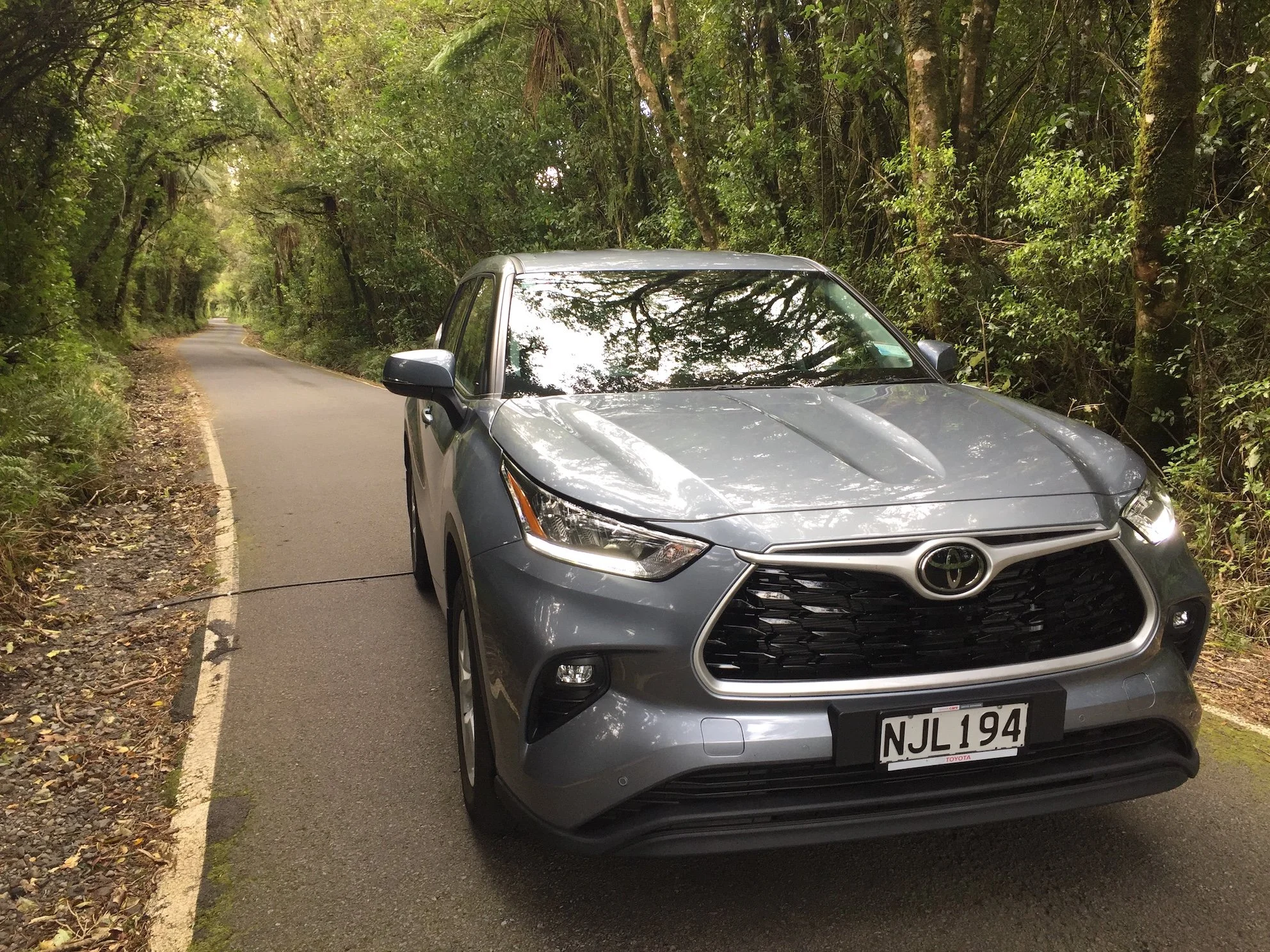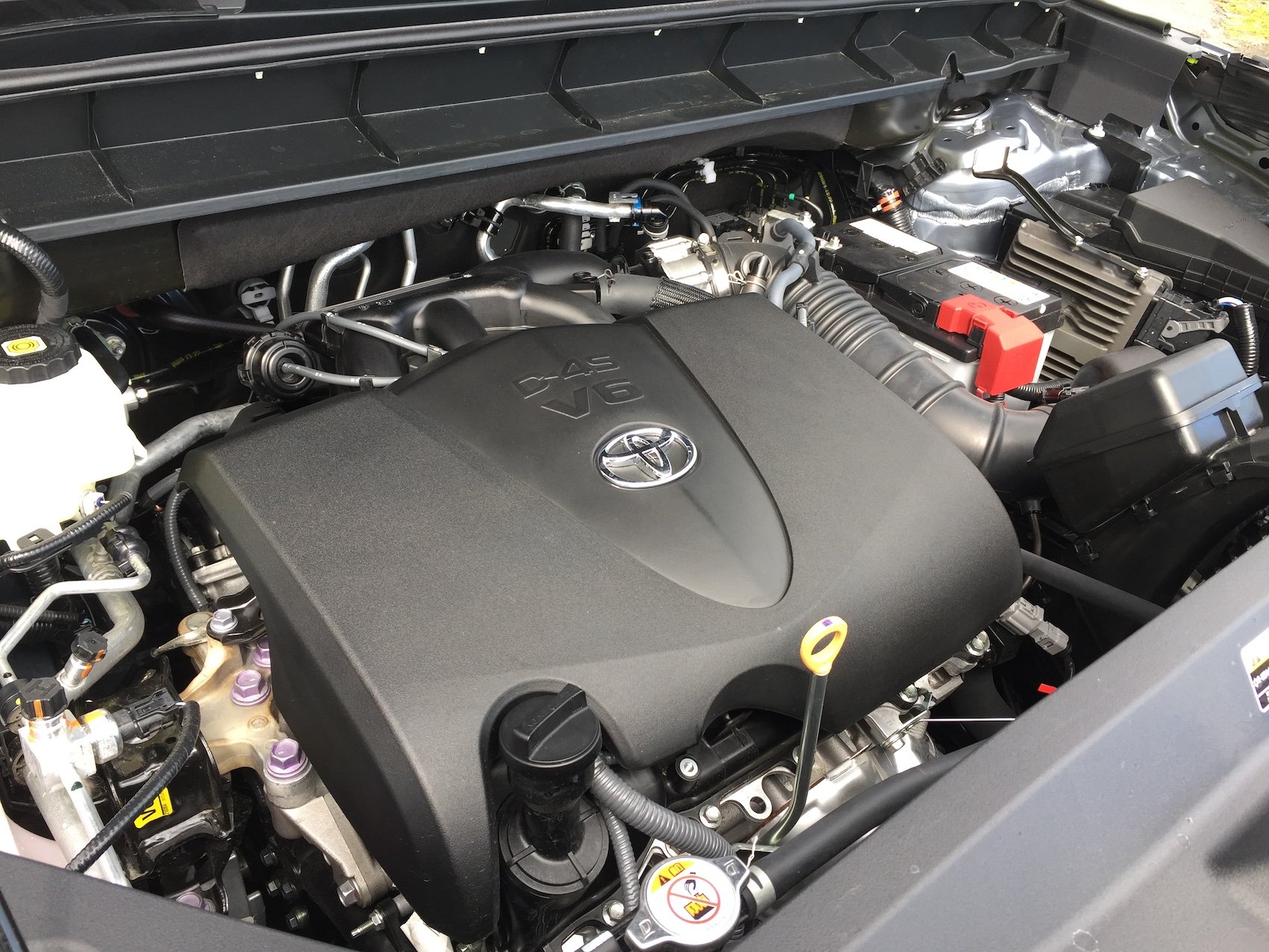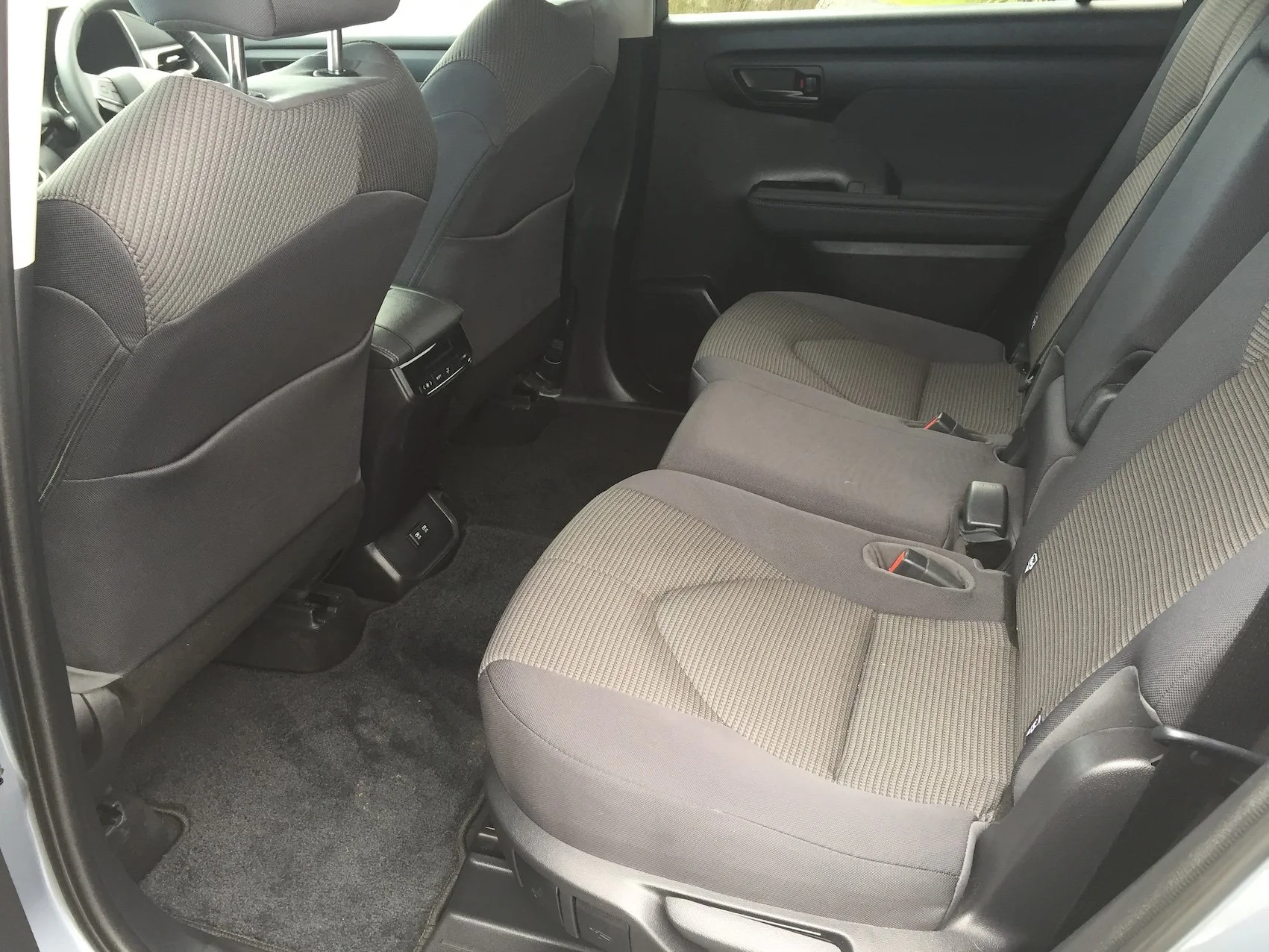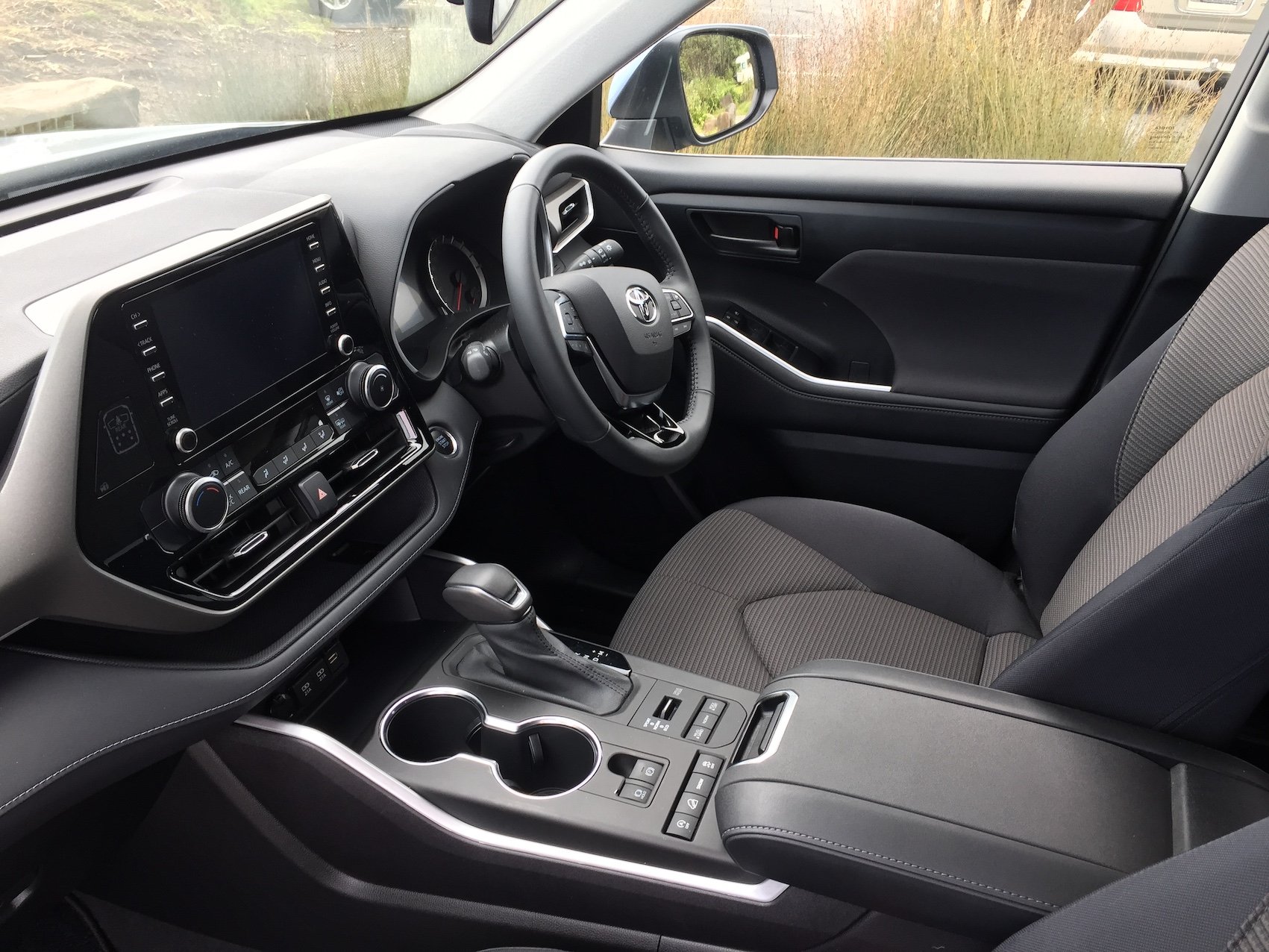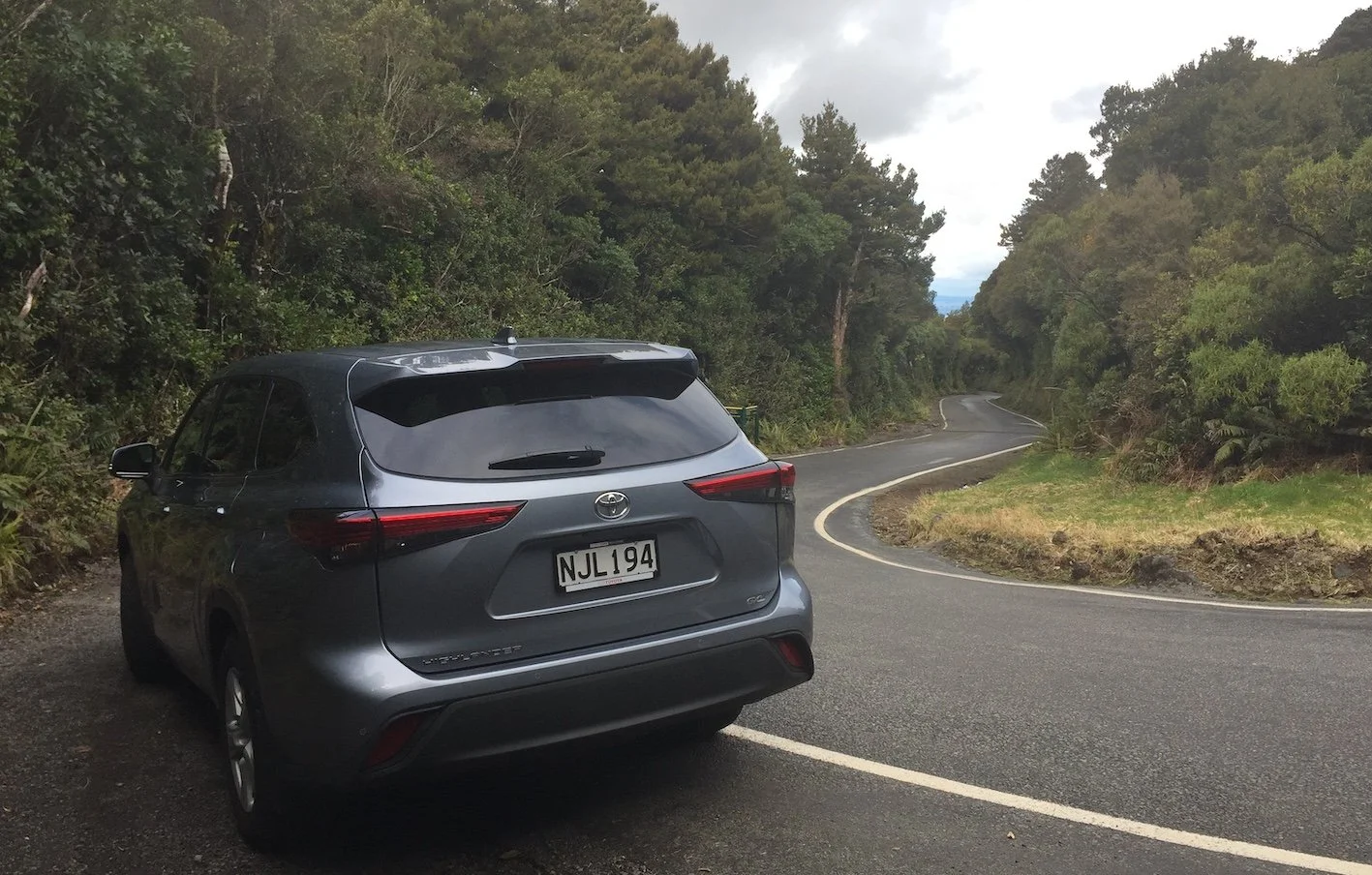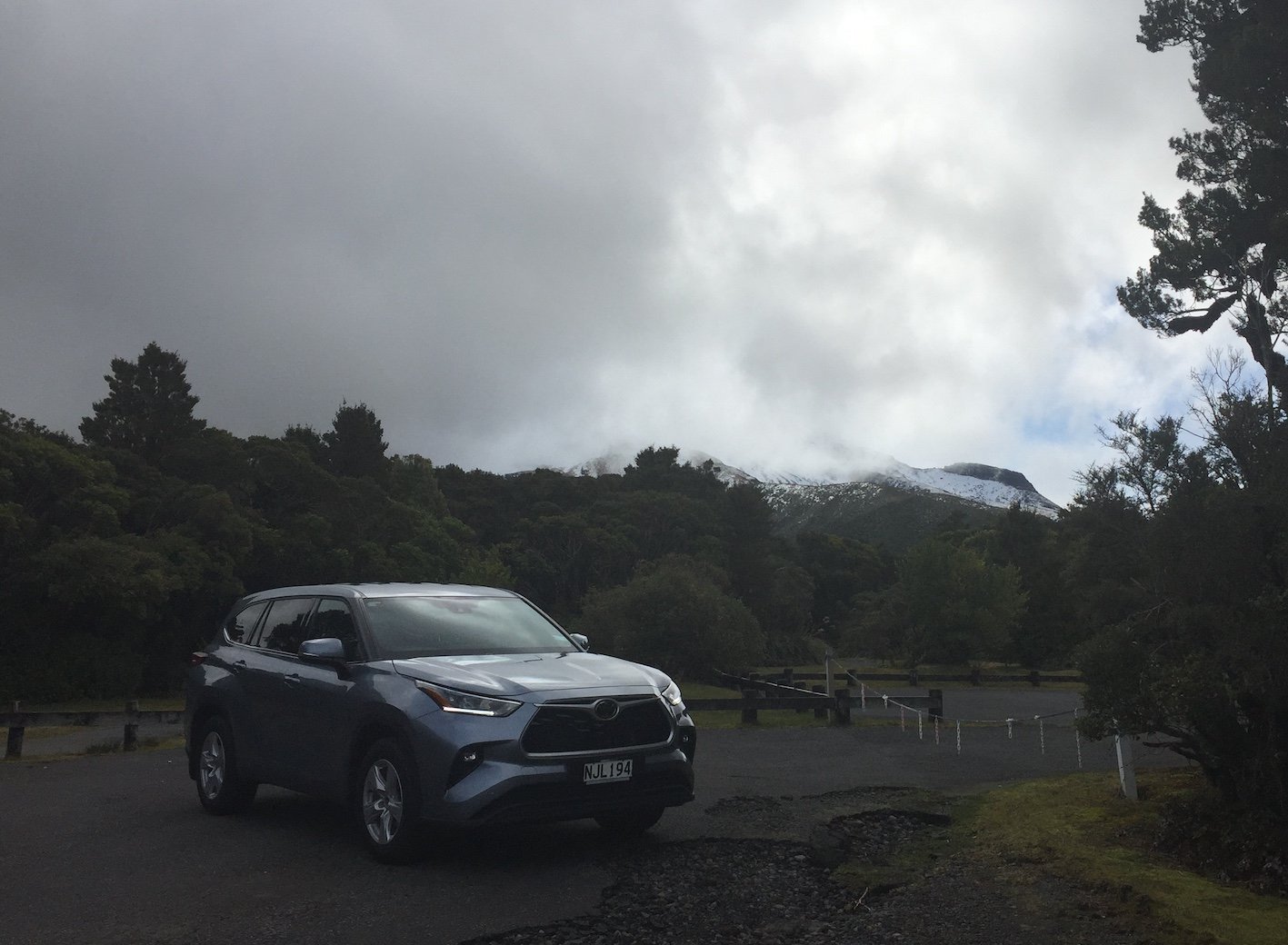Toyota Highlander GXL V6 review: Big hitter taking punches
/Has the pure petrol format passed its use-by date?
Price: $60,990
Powertrain and economy: 3.5-litre 24V quad-cam V6, 218kW at 6600rpm, 350Nm at 4700rpm; eight-speed automatic; all-wheel drive; official economy 8.8 L/100km combined, CO2 205 g/km.
Vital statistics: 4966mm long, 1755mm high, 1930mm wide, 2850mm wheelbase; luggage space 241-1150 litres.
We Like: Good looks; plenty of interior room and luggage space; accomplished ride and handling; high level of safety specification; appealing price.
We don’t like: Economy and emissions being punished from next year must mean this vehicle’s future is clouded.
HIGHLANDER is a great name for Toyota’s medium-large crossover; there’s a certain solidity to it, much like Outback and Outlander and Everest.
It also suits the thematic of New Zealand as a mountainous, outdoorsy country. Never mind most of us live in cities.
When Covid circumstances permit, it’s great to get out of the urban areas and head into the countryside.
Those outings are particularly enjoyable when the vehicle has a bit of heft. The Highlander offers plenty, regardless the latest iteration is based on a car and offered primarily as a petrol-electric. Not that hybrids are wimps of course, but their main raison d’etre is improved economy and lowered exhaust emissions rather than grunt.
Latest statistics show that this change in motive power is succeeding. The three hybrid models in the latest series are the big sellers.
September registrations show 184 Highlander sales. Good enough to make the top 15 place. Of these, almost 85 percent were hybrids. The two 3.5-litre V6 models were left to pick up the pieces.
Potentially just one V6 , actually. This engine also provisions in a richer Limited trim (if you want the top tier Limited ZR, it’s hybrid only). The website says the petrol Limited is out of stock; TNZ insists it and petrol GXL are available to customer order.
I’m picking that given half a chance TNZ will be quietly forgetting about the Limited, leaving it to the GXL to act as a reasonably-priced $60,990 entry model into the Highlander range, $3000 less than the identically specified GXL hybrid.
It is obvious that the combination of an attractive price and the extra grunt must be the primary reasons why customers would opt for the conventional-engined Highlander over the hybrid, which I’ve yet to drive (though Richard Bosselman has. Here’s his launch report: https://www.motoringnz.com/firstdrive/2021/6/8/toyota-highlander-first-drive-review-from-drinking-chump-to-sipping-champ).
It’s certainly not for the economy. The stated official average fuel consumption of 8.8 L/100km and exhaust emissions of 205 g/km of CO2 aren’t bad for a biggish SUV powered by a 3.5-litre V6. For the record, the closest I came to equalling the first was 9.1 L/100km.
Regardless, the hybrid’s combined consumption of 5.6 L/100km and CO2 emissions of 128 g/km are surely so much more acceptable in this day and age.
So while the petrol-only Highlander isn’t exactly a dinosaur, I think it is heading that way – just like what recently happened with the V6-engined Camry sedan. Even TNZ admits the only reason it has retained the variant is to meet demand from fleet operators. And that would indicate that once the full force of feebate scheme kicks in some time next year, and prices for higher-emitting fossil fuelled vehicles rise, this particular Highlander will become extinct.
But meanwhile it remains on sale and the GXL level is appealing for its price.
Built on the latest Toyota New Global Architecture platform which gives it 60mm longer wheelbase and 60mm greater length and slightly more width than the previous-generation Highlander, it obviously has the most interior room of any Highlander yet built.
That’s easily sufficient room for three rows of seats, and when those rear seats are in use there’s still a reasonable 241 litres of cargo space. As a five-seater the Highlander’s cargo room is 552 litres, and if that row is also folded down the load space goes up to 1150 litres. The second row also slides forward and back, which means there can be massive legroom when the Toyota is operated as a five-seater.
Being at the entry GXL level of specification means this petrol model has fabric seats while the other higher-specified Highlanders have either synthetic leather or proper leather accents. It’s missing a few other bits and pieces as well, such as electric control of seat adjustment.
But overall, the GXL has a quality interior with good use of soft-touch materials throughout. The steering wheel and automatic shifter are covered in leather, and the multimedia system features an 8-inch touchscreen that sits above the centre console.
Controls for entertainment and information are housed on the steering wheel, and the system incorporates Bluetooth connectivity, Apple CarPlay and Android Auto. As it should. And one other good feature: the vehicle features five USB charging ports.
All this is in keeping with the intent behind the Highlander which, even though it is an SUV, is very much a family-oriented vehicle. It’s all-wheel drive, and with decent 202mm ground clearance, so it is off-road capable, though there’s no getting away from it being a crossover based on the Camry.
But that’s okay, because Highlander does feature all the good things about SUVs, including raised seating, great visibility, the seven seats, the all-wheel-drive and ground clearance and, in this case, good power and torque.
The engine is a latest version of Toyota’s well-proven 24-valve quad cam direct-injected V6, essentially the same unit – albeit less powerful - that was aboard the Camry V6 dumped by TNZ a few months ago, also mated to a very good eight-speed automatic transmission (whereas the hybrid is CVT). There’s also a Sport/Normal/Eco function that adjusts the transmission change points depending on the sort of performance the driver requires.
I’m in no position to compare the performance, ride and handling qualities of those models against the V6, but in latter guise the Highlander is a nice drive, the sort of vehicle that can comfortably cover hundreds of kilometres without unduly tiring those aboard. Towing of 2000kg braked and 700kg unbraked is good, though be aware the hybrid has the same.
I wanted to use the Highlander to visit New Zealand’s highest highway, the 6.8km SH48, aka the Bruce Rd. This is the access to Whakapapa Village on Mt Ruapehu. At its top the highway has an elevation of 1153 metres.
By the way, the highest state highway ‘pass’ is SH1 between Waiouru and Turangi which reaches 1074m, the highest sealed local road pass is the Crown Range between Wanaka and Queenstown which gets to 1076m, and the highest mountain road is the gravelled access to the Mt Hutt chairlift which gets to 2062m, which is just 10m higher than the access road to the Ohakune chairlift.
Covid-19 travel restrictions kyboshed reaching Mt Ruapehu from my New Plymouth home. So I visited Mt Taranaki instead. There, the highest road end is the Plateau on the eastern side of the mounga which is 1172m above sea level. It was cloudy and raining, so sorry, there’s no photography to prove the Highlander got there.
Not that it mattered. The journey up there was unremarkable and comfortable as the Highlander climbed through beautiful native bush, the experience underscoring the fact that this latest combination of Toyota’s platform engineering and a well-proven petrol V6 continues to result in one of the outstanding medium-large SUVs.
But it is also obvious that in pure petrol form, the Highlander is rapidly becoming a rarity. These days it is the hybrids, and no doubt eventually fully electric models, that are the future. So, just like that drive up the eastern side of the mountain, it has to be said that the petrol Highlander has reached an impressive height – but it will now be all downhill.

